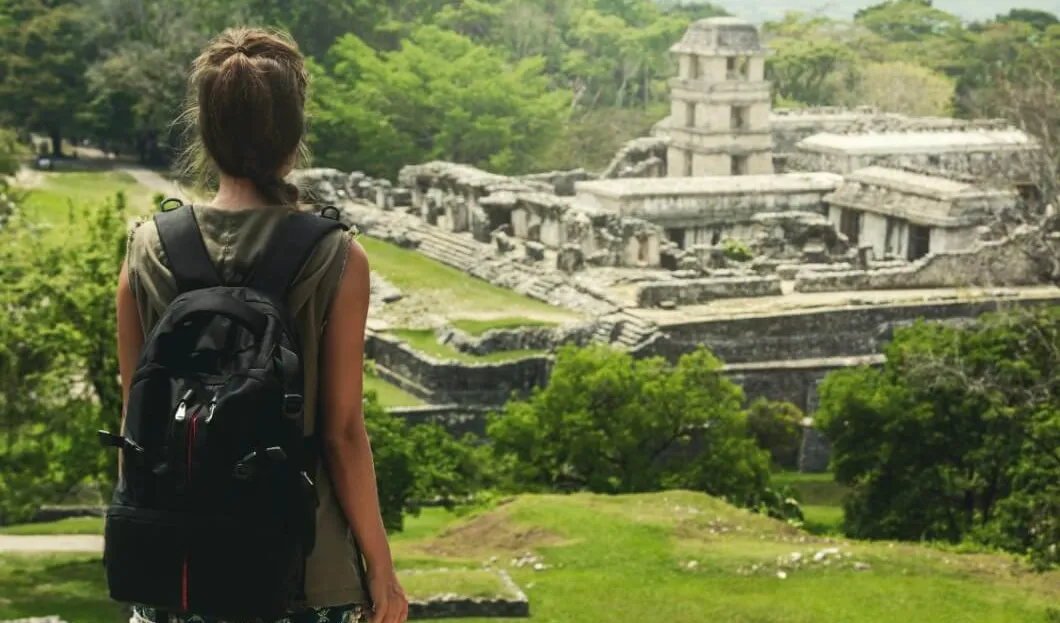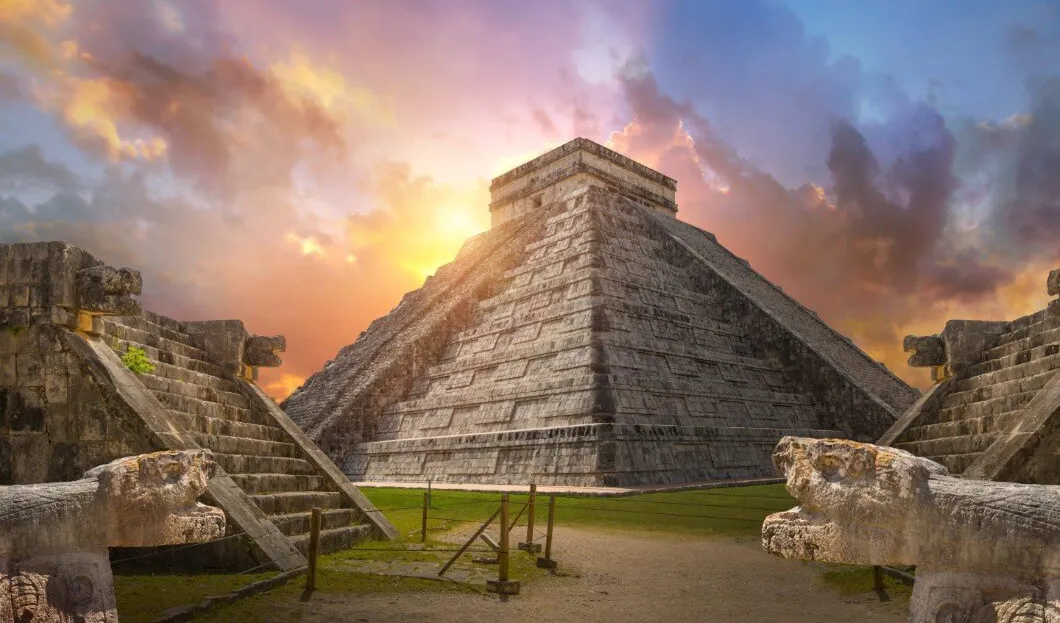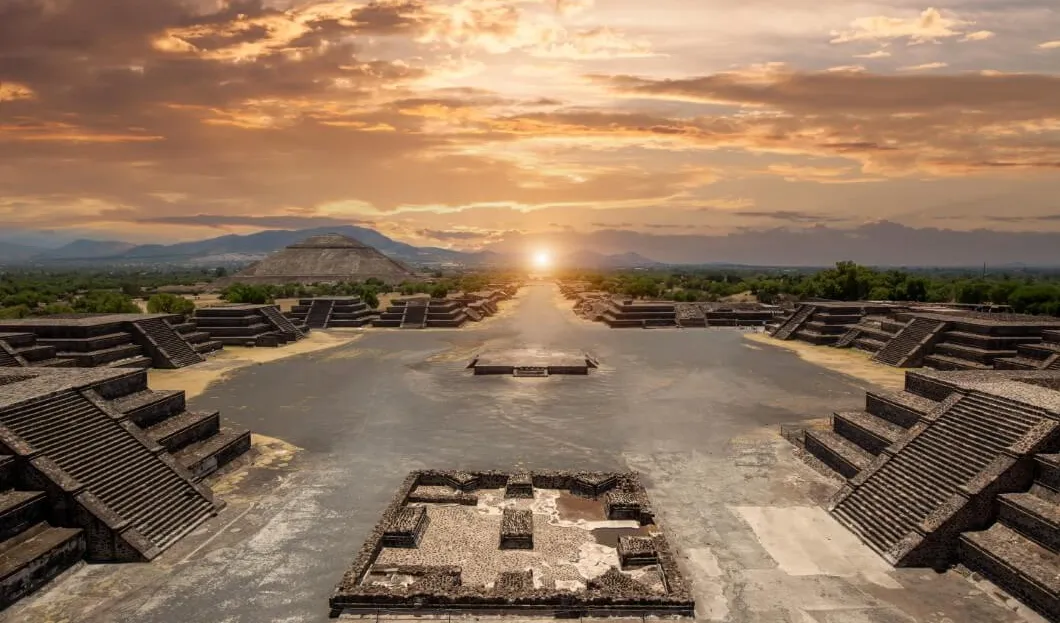45 km from the Zócalo, the Teotihuacan archaeological site, a World Heritage Site protected by UNESCO, is one of the most visited tourist attractions in the country. Among the main attractions are the Pyramid of the Sun, 65 meters high and the second largest in Mexico; the Pyramid of the Moon, 45 meters high; and the Calzada de Los Muertos, 4 km long and located on Teotihuacan’s main avenue, where the remaining constructions of that civilization are located.
It is believed that the construction of Teotihuacan began approximately one hundred BC. At its peak, the city was one of the most populous in the Americas, with around 125 000 citizens. Its structures encompassed multistoried, apartment-like dwellings made to house the residents. Some of the discoveries from this archaeological site include obsidian tools, preserved murals, and a complex system of buildings.
Visitors can walk among the buildings, climb the Pyramid of the Sun and the Pyramid of the Moon, visit the palaces, see the preserved frescoes, and circulate among the structures. It is a tour that requires several hours for the tourist to take advantage of everything the space has to offer. Each angle is more beautiful than the other. Besides the common tour during the day, it is possible to visit Teotihuacan at night: the ‘Noches Mágicas’ event is recent and combines tour and light shows. Visitors can see the pyramids as they were at the time when Teotihuacan was still inhabited.
The most common ways to get to the archaeological site are bus, van, fixed-rate taxi or regular tourist bus tours. To make it easier to get around, the Archaeological Zone offers many entrance gates, each located next to a different attraction.













